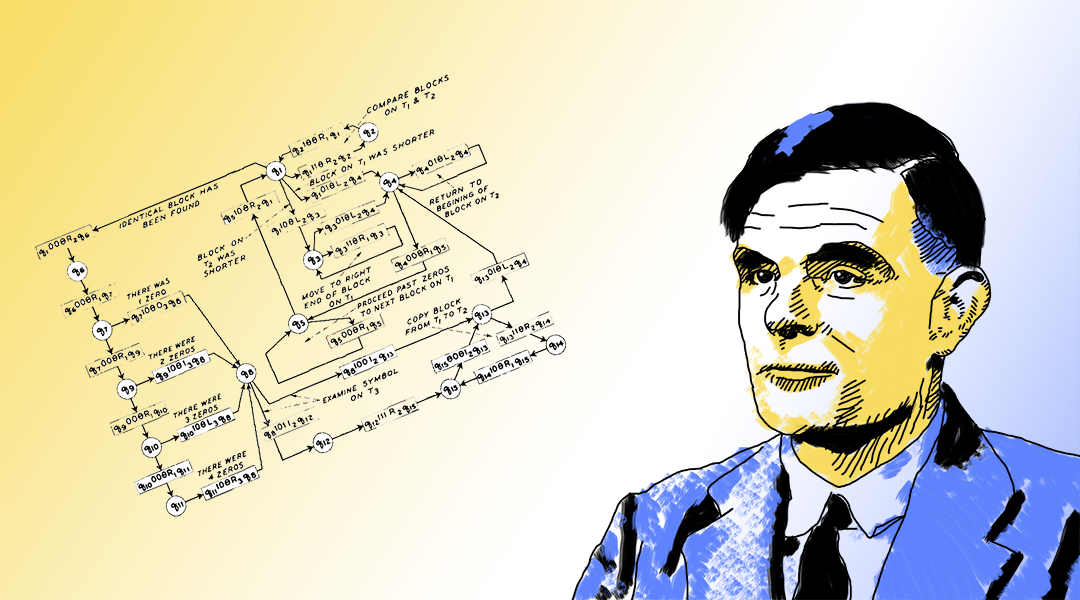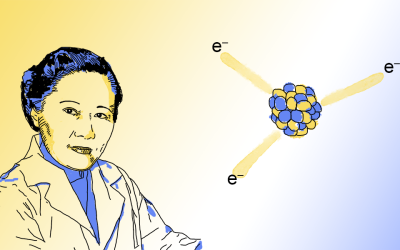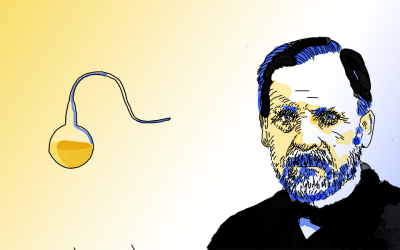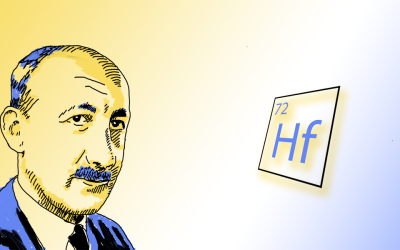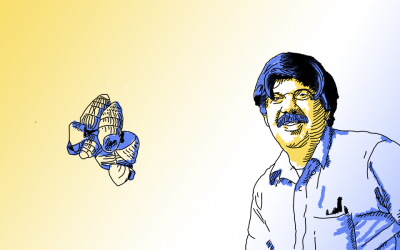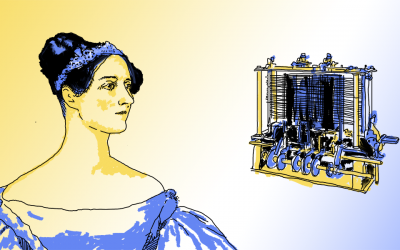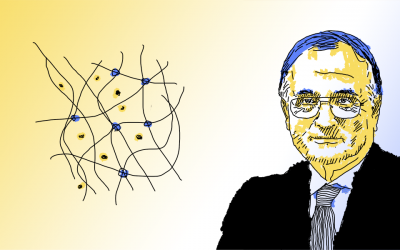Perhaps you’re reading these words on your smartphone or tablet, or perhaps the screen of your laptop. You could be reading it on a separate computer monitor. Whatever you’re reading it on, it is most certainly not paper. The invention of the computer and digital technology remains perhaps the most revolutionary communications technology since the Gutenberg Press over five centuries earlier. But such a revolution would not have been possible, or would have probably developed in a different and unknowable way, were it not for one British mathematician, Alan Turing, who can justifiably be called the founder of modern computer science.
Born 109 years ago this month, Turing laid the groundwork for computer science at the age of just 24; was instrumental as a code-breaker during World War Two; and in 1950, devised what would become known as the “Turing test” — a key concept in the philosophy of artificial intelligence which persists to this day.
But his life was tragically cut short by suicide in 1954. Openly gay, he was charged with “gross indecency” in 1952 — homosexual acts being illegal in the UK at the time — and sentenced to chemical castration. It wasn’t until 2013 when he was posthumously pardoned after years of campaigning, which led to the so-called “Alan Turing law” in 2017, pardoning all men convicted under historical legislation that outlawed homosexual acts.
Were it not for his cruel and barbaric treatment, it is no doubt he would have continued to contribute greatly to science. At the times of his conviction and death, he was just beginning work in the field of mathematical biology, publishing a paper on morphogenesis in 1951.
This edition of Pioneers in Science takes a look at the life and works of Alan Turing and his place not just in the history of science, but also in LGBTQ history.
Beginnings
Alan Turing was born in Maida Vale, London, on June 23, 1912. Like most English children born to upper-middle class parents in the early 20th century, Turing was educated privately, with his education having a heavy emphasis on the classics. But the young Turing instead took a keen interest in the sciences and mathematics, a pursuit his headteacher described as “wasting his time”. It was at school he met Christopher Morcom, described as Turing’s “first love”. Morcom provided the inspiration for the young Turing to pursue his interest in math and science but their friendship was tragically cut short in 1930 when Morcom died of bovine tuberculosis. His death had a profound effect on Turing, who coped with his grief by working ever-more intensely on his mathematical pursuits.
After school, Turing enrolled at King’s College Cambridge where he flourished. In 1935, when he was just 22, he was elected Fellow of King’s College and the following year published his seminal paper “On Computable Numbers, with an Application to the Entscheidungsproblem“. Whilst this paper was groundbreaking in the world of mathematics, it was pioneering in the field of computation.
In the 1930s, a computer wasn’t a machine, but a job title, i.e., human beings. For the most part women, computers were low-paid workers who “crunched numbers” and performed other small arithmetical tasks as part of a wider team working on large-scale computational problems. The concept of a mechanical computer however wasn’t new — the proposed “analytical engine” of Charles Babbage and the contributions of Ada Lovelace a century earlier were well-known — but in the 1930s, mechanical computers were not reprogrammable.
Turing’s paper opened the door to overcoming this limitation by introducing for the first time the concept of a stored-program computer, and moreover, a computer that was general-purpose; i.e., it could perform any computational task, or program, given to it regardless of its mechanical construction. This he dubbed a “universal computing machine”, later to be known as a “Turing machine”. This groundbreaking concept, as well as other insights in the paper, are still to this day central tenets in computational theory, and it is no exaggeration to claim that this paper — and therefore Turing — was the foundation of what we now call computer science.
Bletchley Park
After Cambridge, Turing studied for his Ph.D. in pure mathematics at Princeton University under the supervision of Alonzo Church. It was at Princeton that he was also introduced to the field of cryptography, which would prove to be crucial for his career. He returned to the UK in 1938 where he worked part time at the Government Code and Cypher School (GC&CS). This was the British organization for codebreaking, and was the forerunner to what is now GCHQ. At the GC&CS, he focused on the cryptanalysis of the Enigma machine, a cipher device used by Nazi Germany to send encrypted messages.
Upon the outbreak of World War II, Turing reported to work at Bletchley Park, the wartime center of GC&CS, in a building named simply “Hut 8”. The team at Hut 8 were responsible for deciphering intercepted but encrypted messages from the German Navy, who were using a new version of the Enigma machine. Several Polish codebreakers had already contributed a great deal to this effort during the 1930s, but the latest Enigma machines were far more powerful and codebreakers were struggling to crack them.
The biggest problem when Turing arrived at Bletchley was to find the cipher key that would decrypt messages intercepted by the Allies. This key was changing every day, and although Hut 8 had many “computers” working on this problem — that is to say it employed people to number-crunch and help break the Enigma codes — Turing recognized they needed to get away from human computers and move to mechanical computers that could solve the same problems far faster. They needed to figure out the cipher key before this key was changed after 24 hours.
For this, Turing built on work done in 1938 by Polish cryptologist Mariam Rejewski, who had already designed a machine to break Enigma codes, and designed a machine that could quickly figure out the key to decrypt messages in time. This machine was name the Bombe, in homage to the machine built by Rejewski, the bomba kryptologiczna. The machine proved effective in breaking the naval Enigma messages, and was subsequently instrumental in numerous Allied victories during the war.
Although he was awarded with an Order of the British Empire in 1946, Turing’s work at Bletchley Park wasn’t made public knowledge until the 1970s, after his death. Indeed, two papers he wrote during this time, which explained in detail his cryptanalysis, were only declassified as recently as 2013. Turing himself was sworn to secrecy about this work under the Official Secrets Act, and so after the war he resumed his academic career.
Can machines think?
After the war, Turing worked at the National Physical Laboratory where he presented a paper — unlike his paper published ten years previously — that provided a detailed design of a stored-program computer, rather than presenting such a computer as a concept. This was named ACE (automatic computing engine), and is regarded as one the world’s first stored-program computers. Turing left the NPL before ACE’s construction was complete, taking up a position at the Victoria University of Manchester, now the University of Manchester.
There, he wrote the software and programmer’s manual for another stored-program computer: the Manchester Mark 1. This computer caused a sensation in the British Press and first brought the power and potential of non-human computers into the public imagination. Turing became deputy director of the Computing Machine Laboratory at the university and began working on more abstract mathematics relating to computers.
This work led him to propose what would become one of his most well-known contributions to computer science: the Imitation Game, more commonly known as the “Turing test”. Even those not versed in computer science might have heard of this test, and some might know it has something to do with testing if a computer possesses artificial intelligence, or AI.
Writing in the journal Mind in 1950, this paper was the first to hypothesize that a computer could be so powerful that it could fool a human into thinking they are interacting with another human, and therefore that the computer could be regarded as being intelligent. The fact that this paper was published in a journal of psychology and philosophy shows just how ground-breaking this paper was; barely a year after the world’s first programmable computers were being built, here was Turing likening computers not to machines, but to minds.
Even now, the idea that your smartphone might be intelligent raises eyebrows (especially if, like mine, it is a number of years old and becoming increasingly unreliable). In 1950, Turing was raising similar ideas when the world’s most powerful computers had less than 1 kB of memory. To this day, AI and its implications is as big a subject in philosophy as it is in computer science — a blending of seemingly unrelated disciplines that finds its roots almost three quarters of a century earlier in Turing’s paper.
This seminal paper didn’t just pose the idea of the Turing test, but also the idea of machine learning, although this term wasn’t coined until 1959. In 1950, Turing instead speculated on the possibility of “learning machines”, which for the first time posited that contrary to contemporary belief, computers can in fact perform tasks they were not originally programmed or “told” to do. Unfortunately, Turing would never live to see his ideas vindicated.
Conviction and death
For all the progress that came after the war — technological and cultural — Britain during Turing’s lifetime was still socially conservative in a lot of respects. Homosexual acts between men were a crime and punishable by prison sentences under the ludicrous-sounding charge of “gross indecency”. Alan Turing was often open about his homosexuality to those close to him; whilst at Bletchley Park he met and befriended fellow code-breaker Joan Clarke. They were briefly engaged until Turing came out to her and broke off the engagement, but they nevertheless remained close friends until Turing’s death.
In 1952, Turing began a relationship with a young man named Arnold Murray. Shortly afterwards, his house was burgled and after Murray informed Turing that he knew the burglar, Turing reported the incident to the police. It was through this investigation that his relationship with Murray came to light, and charges were brought against Turing.
Entering a guilty plea, he was offered a choice of a prison sentence or probation. He chose the latter, but this came with the condition he underwent hormonal “treatment” to lower his libido. Such a sentence was tantamount to chemical castration and stands as an example of the harsh and barbaric treatment of homosexual and bisexual men in the UK at the time.
It wouldn’t be until 1967, when homosexual acts between men over the age of 21 were legalized in the UK, and 2001 when the age of consent was equalized for everyone regardless of sexual orientation. By avoiding a prison sentence, Turing kept his job at the University of Manchester, but his security clearance for GCHQ was revoked and his conviction barred him from traveling to the United States.
On June 8, 1954, Turing was found dead by his housekeeper at the age of 41. The cause of death was cyanide poisoning ingested with a contaminated apple found by his bedside. Whilst we still don’t know for sure, the majority opinion is that he took his own life, likely as a result of his conviction and subsequent harsh punishment. The world lost a great mind that day, tragically cut short in an unjust world. One can only wonder what other great things he would have gone on to achieve.
In 1936, he laid the foundations for modern computer science; in 1950 he laid the foundations for modern artificial intelligence and theory; at the time of his death he was just beginning academic pursuits in the field of mathematical biology. He had already published a paper in 1951 about morphogenesis, trying to find a chemical and mathematical basis for why a particular cell or organism has the shape it has. The structure of DNA was only published in 1953; we can be sure that had he lived longer, Turing would have been enthused by the burgeoning field of genetics, a subject that nowadays relies heavily on computing.
Legacy
A lot more could be written about the scientific achievements of Turing, but this Pioneers hopefully does justice to his most important contributions. His legacy is far-reaching and has already been touched upon; computer science wouldn’t exist, or could be very different, without him; the concept of machine intelligence and learning might have come much later — perhaps we’d have a different criterion to test whether a computer possesses AI, but we wouldn’t call it a Turing test. His legacy is felt in biology with “Turing patterns“, such as that found on the giant pufferfish.
Turing’s name appears in mathematics and computer science departments all around the world, in homage to his great work. The current home of the School of Mathematics in the University of Manchester is the Alan Turing Building, completed in 2007.
His legacy is also seen in the history of LGBTQ rights in the UK. His arrest and conviction just for being who he was has since become one of the most high profile court cases in British LGBTQ history since the trials of Oscar Wilde at the end of the 19th century. The year of his death saw other high profile convictions under the same law, which caused public anger and led to the British establishment starting a report to re-examine it.
In 2009, following the strength of an online petition, the then-Prime Minister of the UK, Gordon Brown, publicly apologized on behalf of the British government for the charges brought against Turing. Five years later, after another petition and several debates in Parliament, the Queen posthumously pardoned Alan Turing in August 2014, 60 years after his death, which legally overturned his 1952 conviction.
Following this legal victory, which had been the goal of many LGBTQ rights campaigners, the next Prime Minister, David Cameron, and his government announced their intention to posthumously pardon and exonerate all men who had been convicted under historical legislation that punished homosexual acts. This law was nicknamed “the Alan Turing law” and is contained within the broader Police and Crime Act 2017.
This Pride month, and in the month of his birthday, Alan Turing is given a deserving highlight as a pioneer in science.
Illustration: Kieran O’Brien

